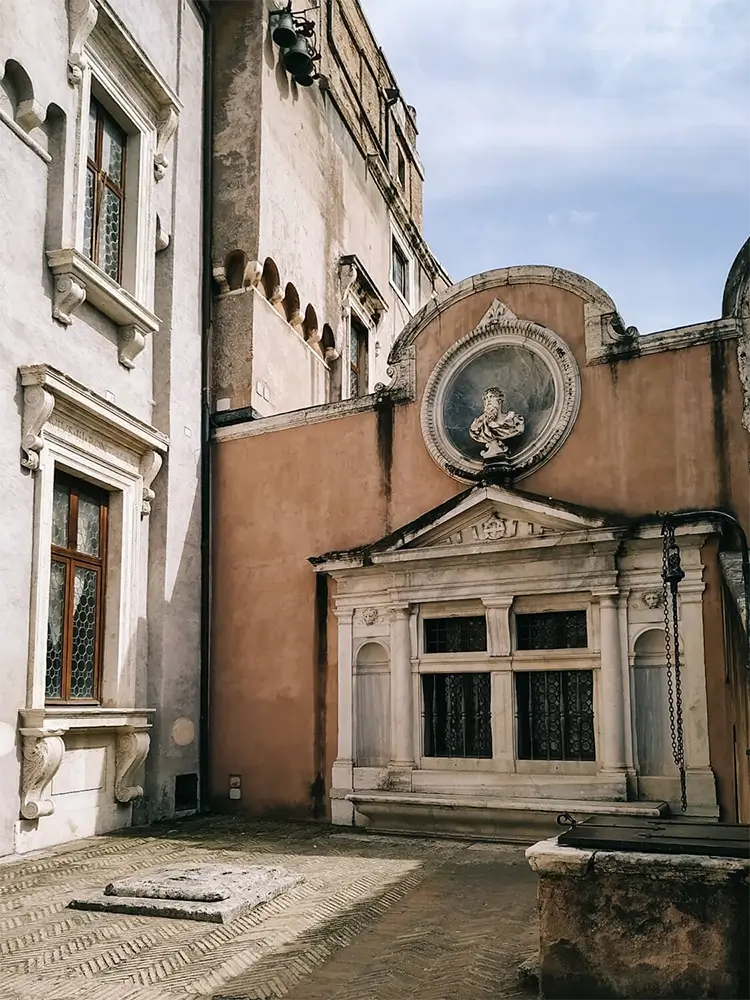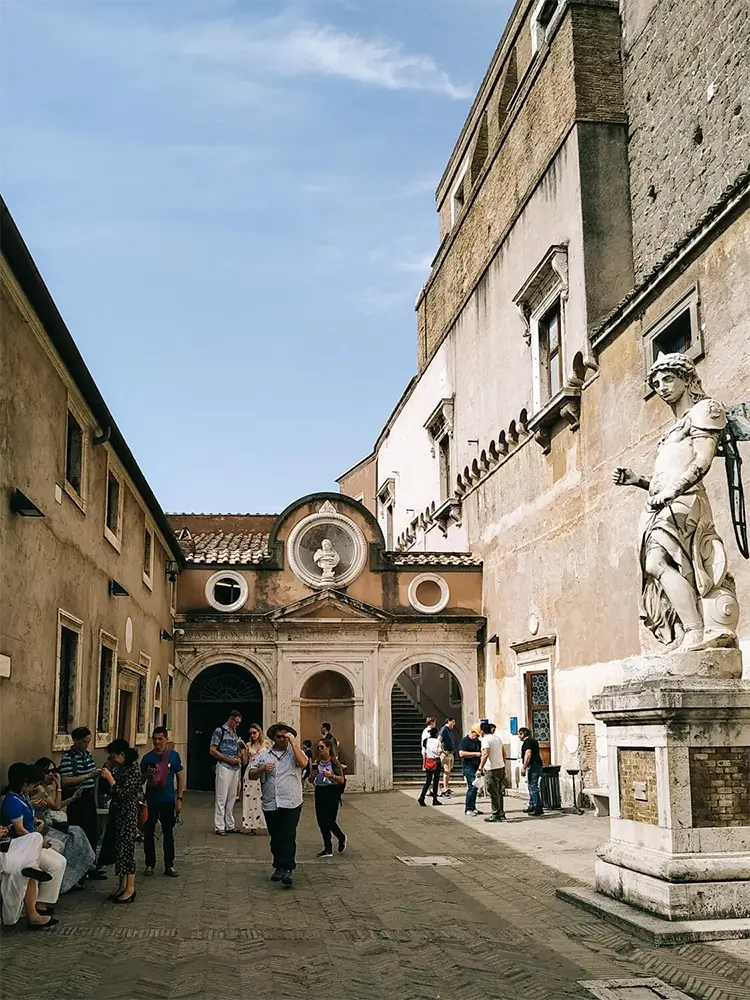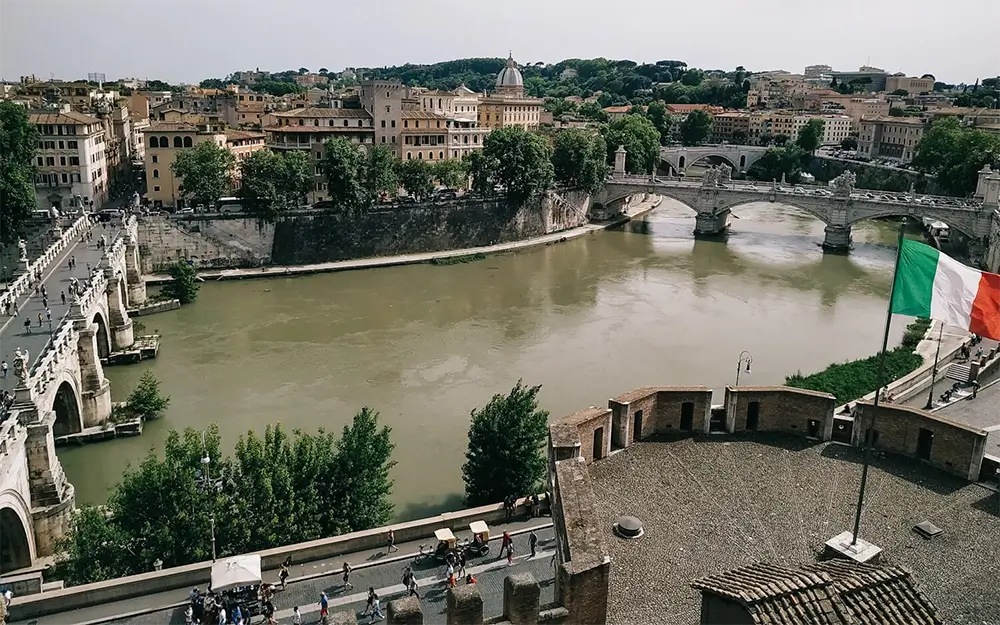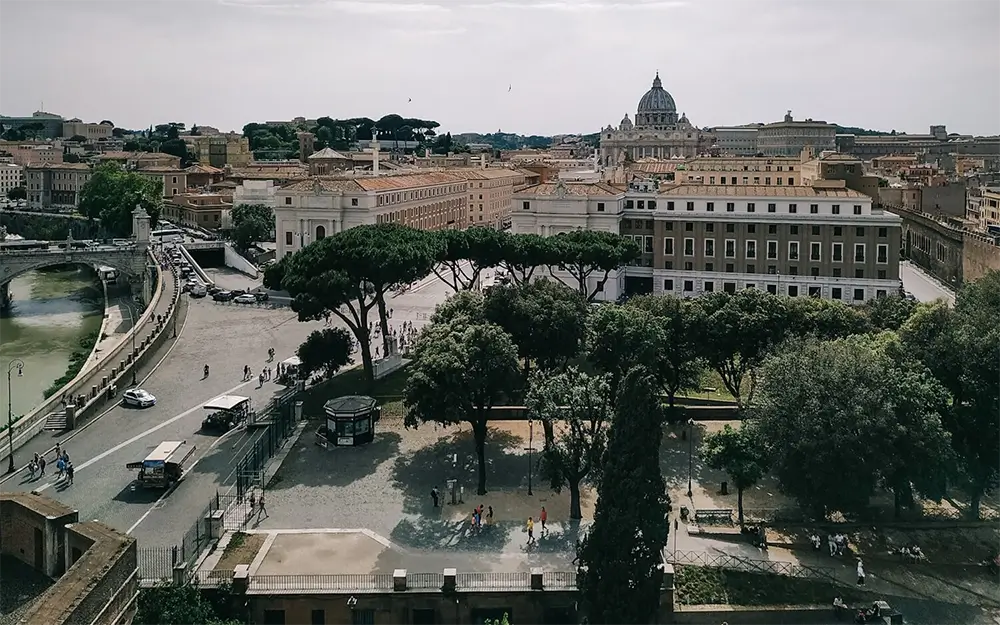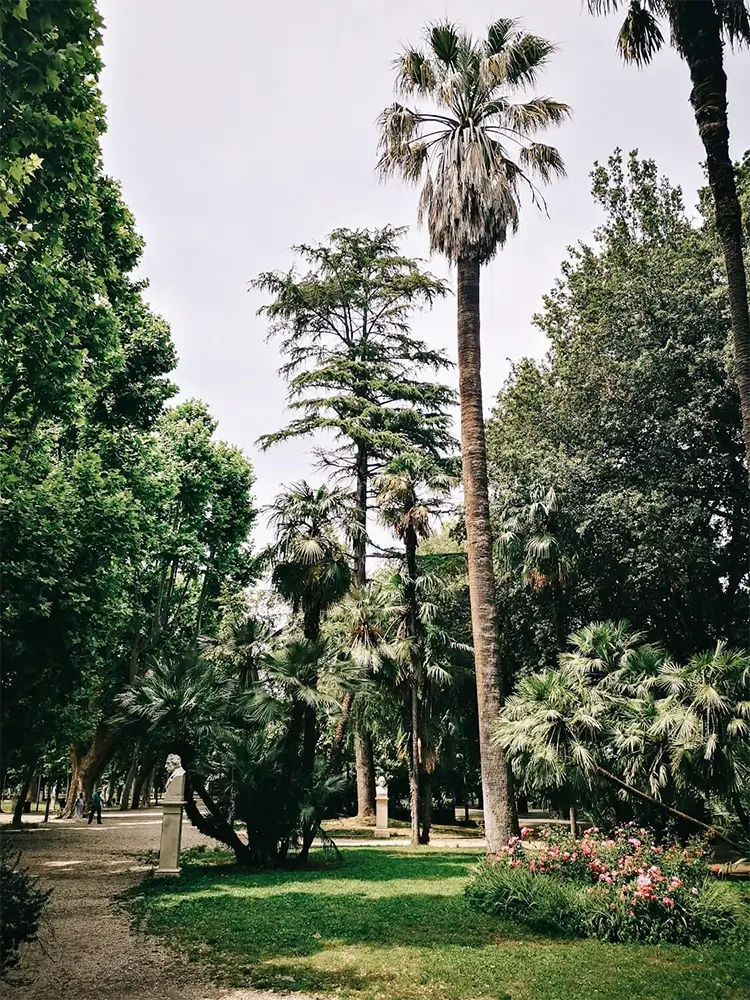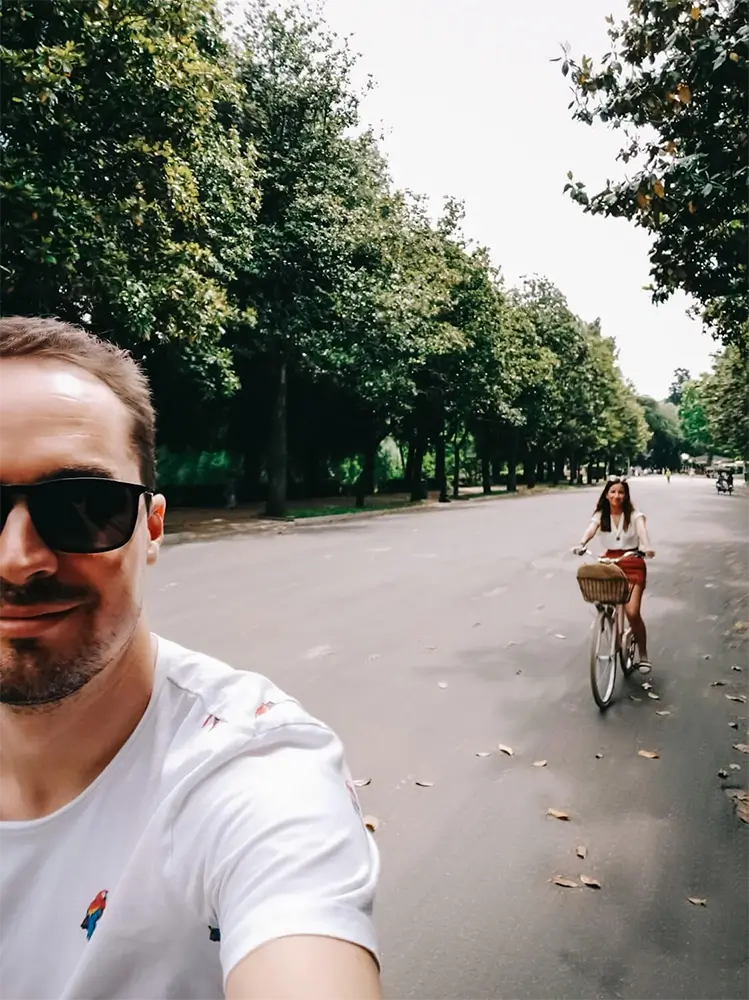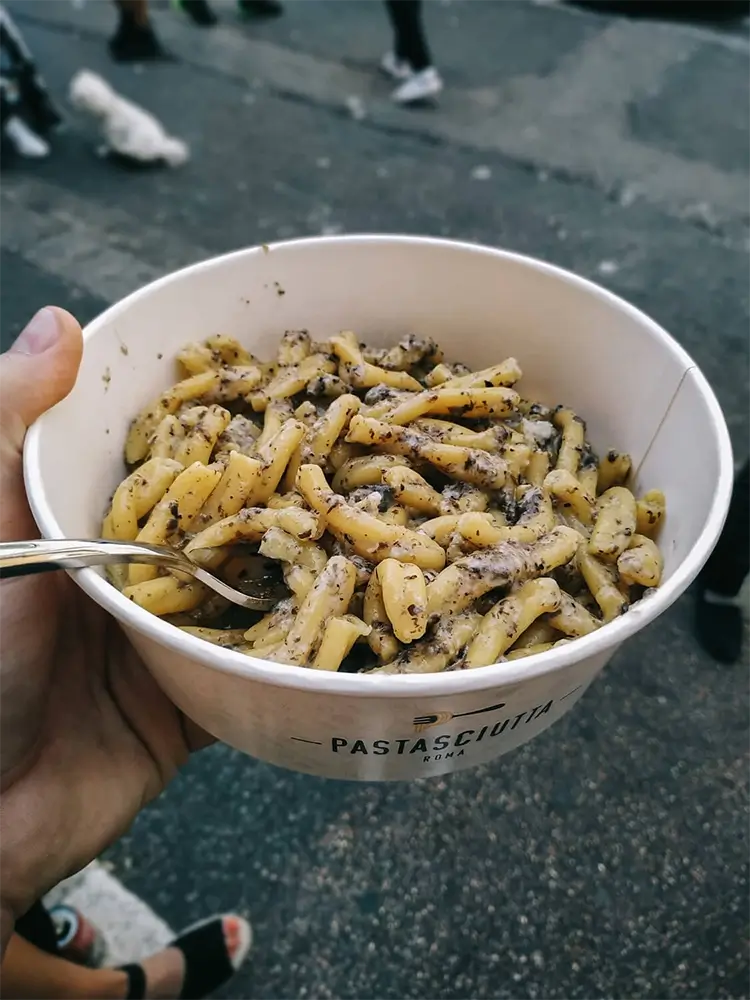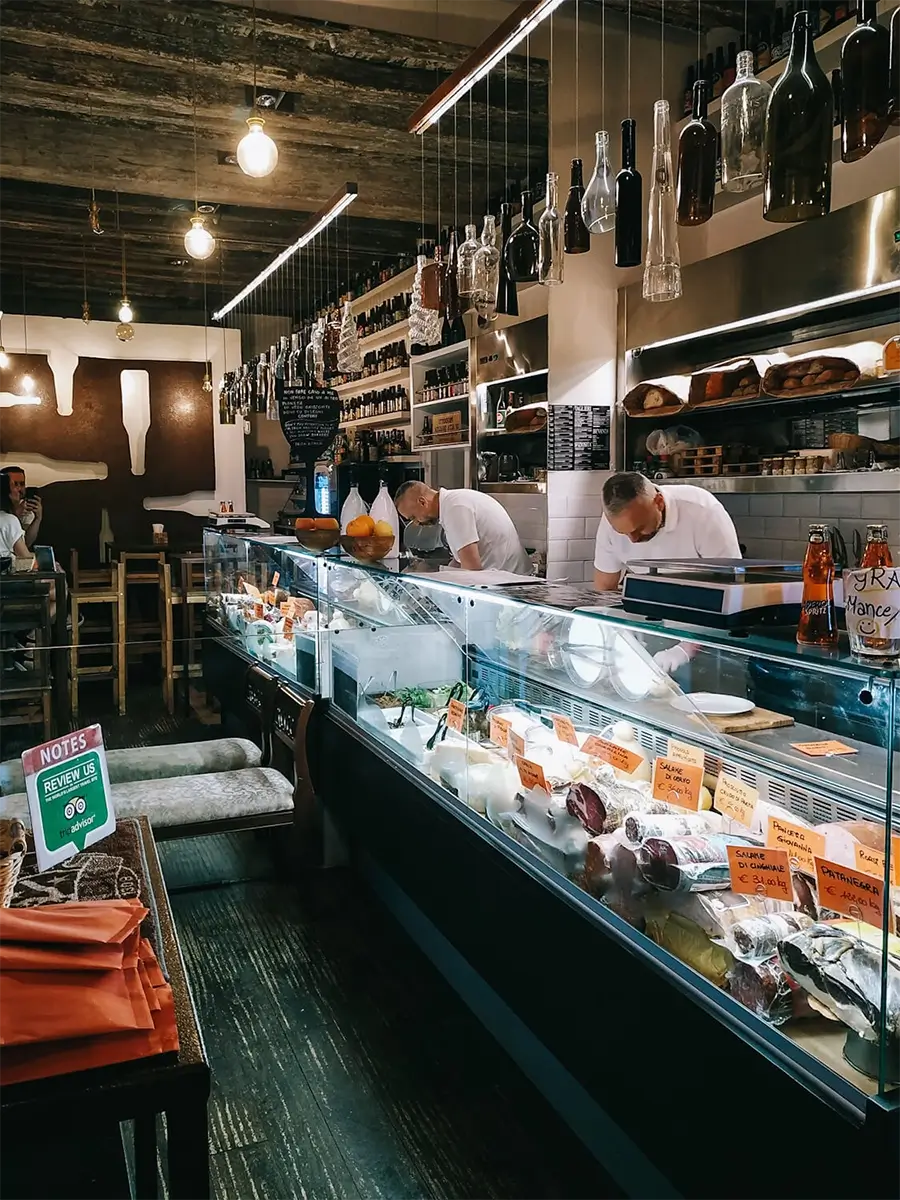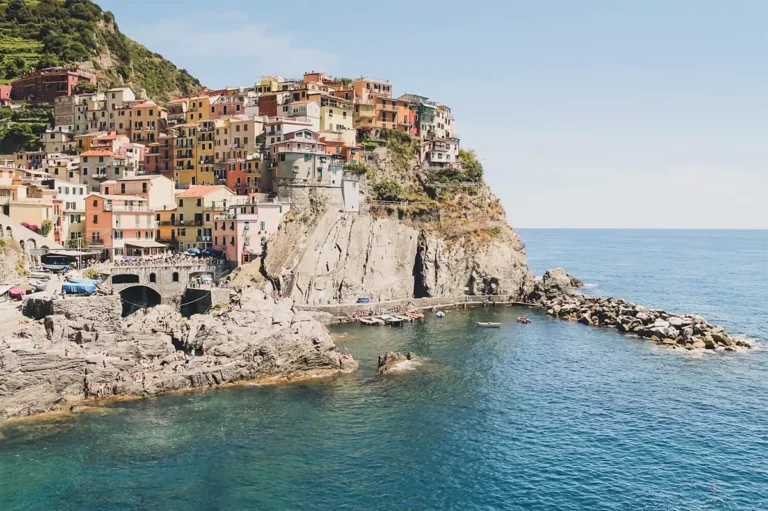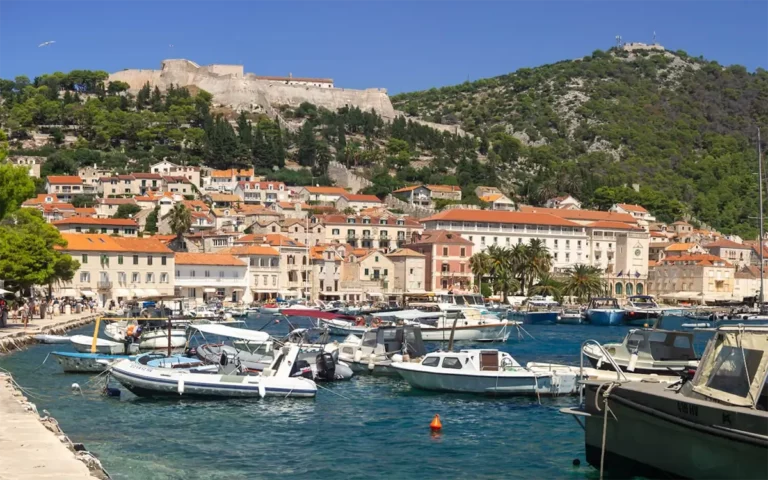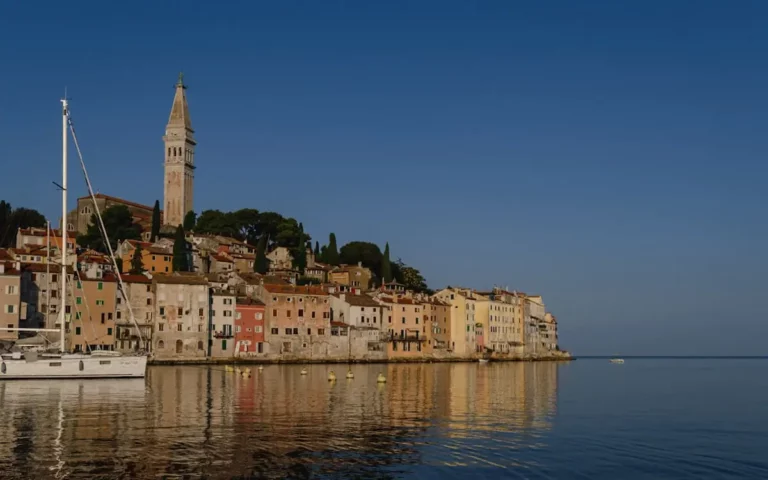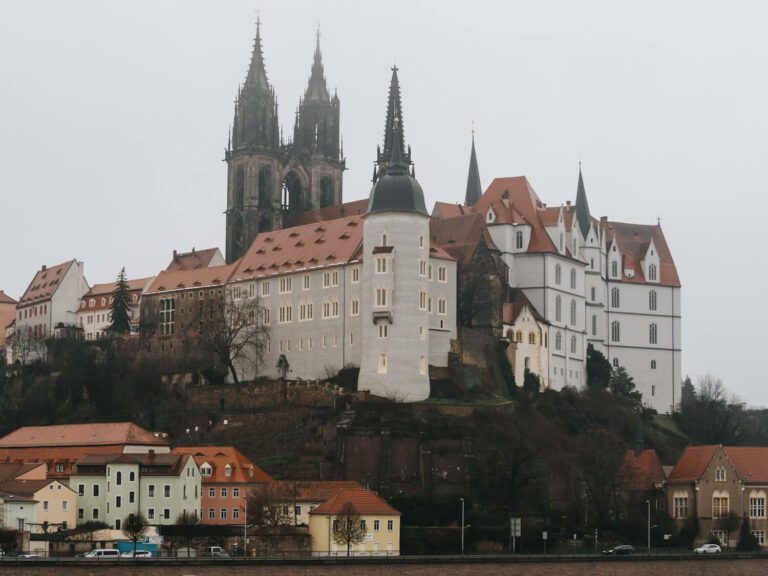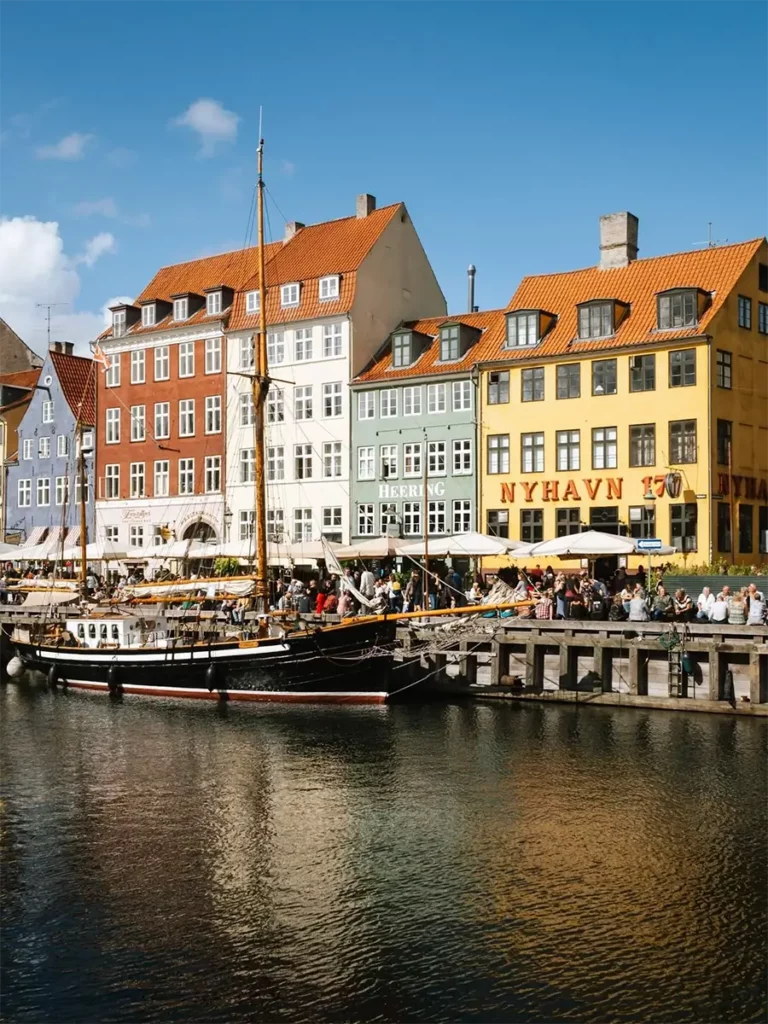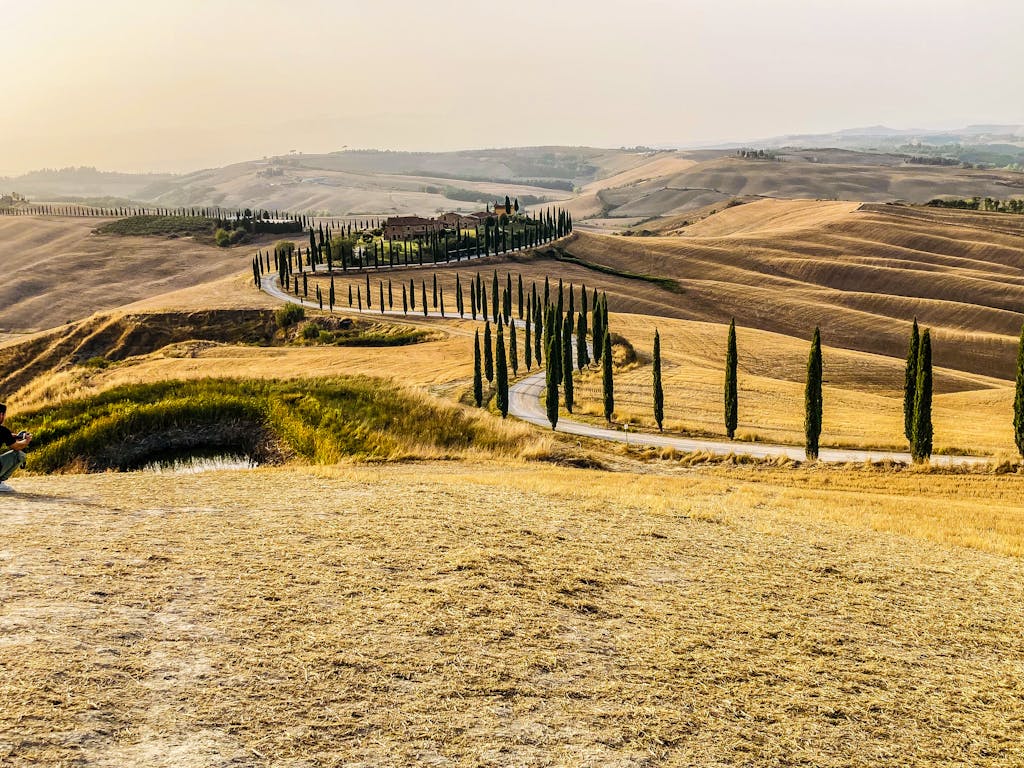How to Make the Most of Your Trip to Rome in 3 Days
Rome, the cradle of the former Roman Empire and home to the Vatican, is home to numerous wonderful historical sights.
The city’s rich history provides a wealth of opportunities for visitors. Rome is one of the best cities to visit in any season, with so much to see and do. We also have such a plan, but so far we have only visited during the summer season.
I use affiliate links to recommend specific services, products, accommodations, or activities. If you make a purchase through one of these affiliate links, I receive a small commission at no additional cost to you. You will pay the same amount as if you had visited the site directly. This small source of income helps me keep this site running.
Arriving at Rome’s airport
Upon arriving at Fiumicino airport, we found that the Leonardo Express train was the most convenient way to reach the city. It’s a preferable option over buses. Trains depart for Rome’s Termini station every 30 minutes. You can find more information about the timetable on the website of Trenitalia. Tickets cost €14 in 2025 and the journey takes about 30 minutes. Children between 4 and 12 years old travel for free, but one adult can only travel for free with one child, while the second child needs a ticket. To find the best available prices and times, check Trainline. Or, you can opt for a bus, but we haven’t explored that option yet.
Where to stay in rome
To our advantage, Rome’s main attractions are relatively concentrated in the city center. This meant we could choose well-located accommodations, within walking distance of almost everything we wanted to see. We settled around Campo de’ Fiori, which proved to be a fantastic choice. The square has a lively atmosphere, with a morning market and bustling bars and restaurants in the evening. But, the immediate vicinity of the square can be noisy due to these activities. To get to the square, take bus 70 from Termini station.
Get travel destinations tailored for you. By following travelers you trust and relate to, Plannin offers personalized travel suggestions that match your preferences and budget. Discover hidden gems and authentic experiences recommended by like-minded explorers, not algorithms. Whether you’re planning a relaxing beach getaway, an adventurous mountain retreat, or a cultural city break, Plannin connects you with accommodations that feel just right. Unlock exclusive member deals on worldwide stays. When you sign up for a free account, you get access to exclusive deals of 10% off or more. Say goodbye to endless searching – these special rates aren’t available to the public and can save you hundreds on longer stays.
Join our growing community of passionate travelers who share their genuine experiences. Create your own personalized wishlist, receive alerts for price drops on your favorite destinations, and enjoy seamless booking with our price guarantee. Sign up today on Plannin and transform the way you plan your next adventure!
Public transport in rome
While considering the Roma Pass, we decided not to buy it, and we didn’t miss it during our visit. It might be more beneficial if you plan to use the metro or bus daily. The pass costs €58,5 in 2025 and grants you free access to Rome’s entire public transportation network for 72 hours from the first museum visit. It also provides free entry to the first two museums or archaeological sites and discounted admission (up to 50%) from the third museum onwards.
However, the pass is not valid for the Vatican Museums, and the free public transport does not apply to the Leonardo Express, FL1 train, buses to/from Fiumicino and Ciampino airports, and areas outside Rome’s administrative boundaries. You can buy a 48-hour Roma Pass for €36,5 in 2025, which includes free entry to the first museum without queuing and discounted entry to other museums, along with free public transport.
You can find more information about the passes on the website of Romapass.
A public transport ticket (BIT) will cost €1.50 in 2025. It is valid for 100 minutes from the first validation and can be use for transfers but cannot be combine with the subway.
During our four-day trip, we visited various attractions, and it’s worth noting that the order of your visits will depend on your arrival and departure time. This list is a good base of what you can visit in Rome in 3 days.
Why did we choose to visit Rome during the peak season? We picked the summer season because after three days in Rome, we were on our way to Amalfi to experience the local way of life. That area is really busy in the summer. We went to Amalfi by car, which we picked up and dropped off at Fiumicino airport, as we flew home from there. For budget planning, this seemed to be the best option for our trip. Discover Cars has a great interface to find the best car rental price, they also offer 24/7 support and free cancellation.
Sightseeing in Rome
Colosseum
As a symbol of Rome, this colossal amphitheater stands as one of the most significant works of Roman architecture. It was built from 70-72 to 80 AD, and its impressive dimensions made it capable of hosting 50-80,000 spectators. Located to the east of the Forum Romanum. It measures 48.5 m high, 156 m wide and 189 m long. To avoid lines, arrive early or buy your tickets in advance.
Updated in 2025. Combined tickets: Colosseum, Forum and Palatinus Museum €18. Free under the age 18. You can buy tickets online from the official website here.
Choose a guided tour to find out more about Colosseum and Roman Forum & Palatine Hill.
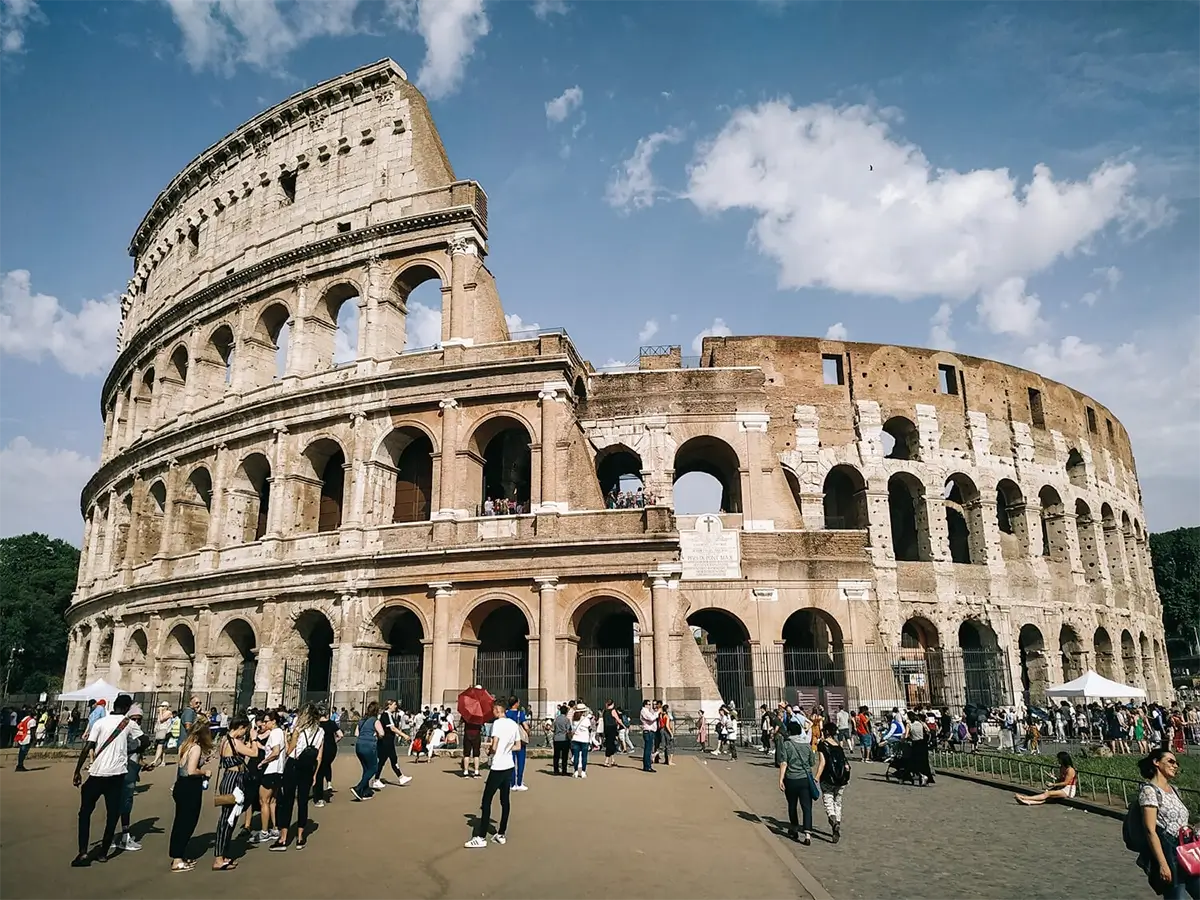
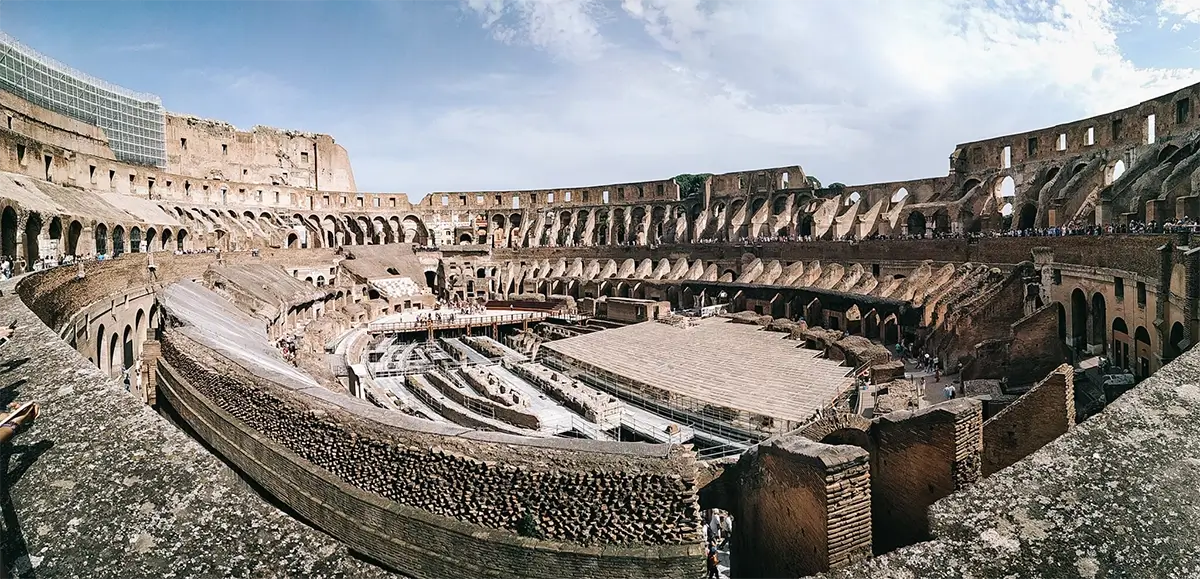
If you don’t want to join a group but still want an audio guide at your fingertips, check out WeGoTrip. They offer a variety of self-guided audio tours on mobile and Skip the Line tickets. Check out their offerings in Rome. Museums do not provide headsets for these audit guides, so be sure to bring your own.
Palatine Hill & Roman Forum
Between the Capitoline Hill and the Palatine Hill, west of the Colosseum, lies the center of ancient Rome, which is still being excavated.
The Forum can be seen from Palatine Hill, so you can admire the temples and triumphal arches without a ticket. But it’s worth taking a closer look and buying a combined ticket for the Colosseum.
Updated in 2025. Combined tickets: Colosseum, Forum and Palatinus Museum €18. Free under the age 18. You can buy tickets online from the official website here.
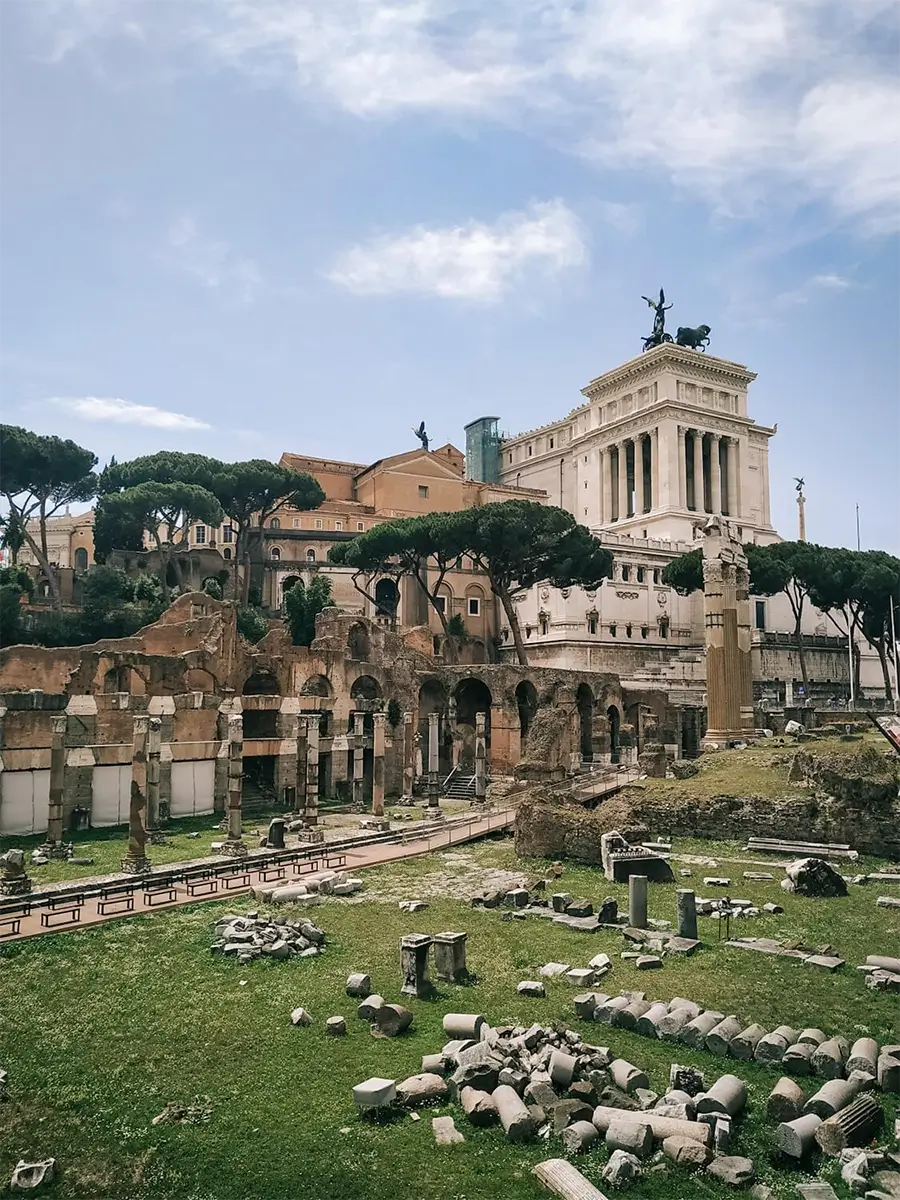
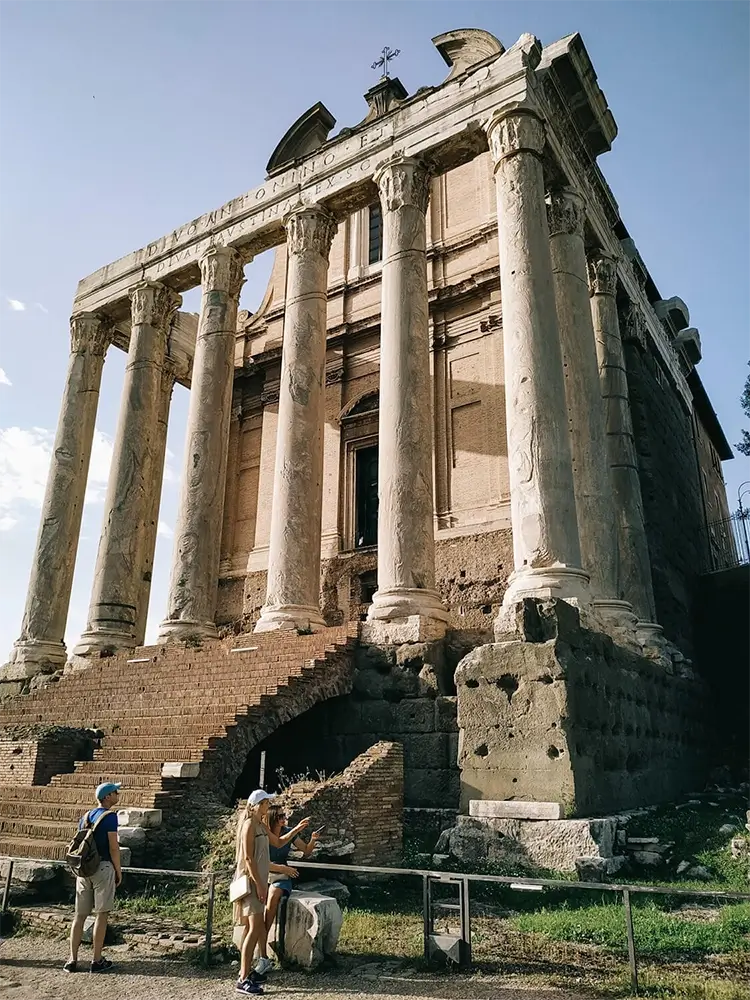
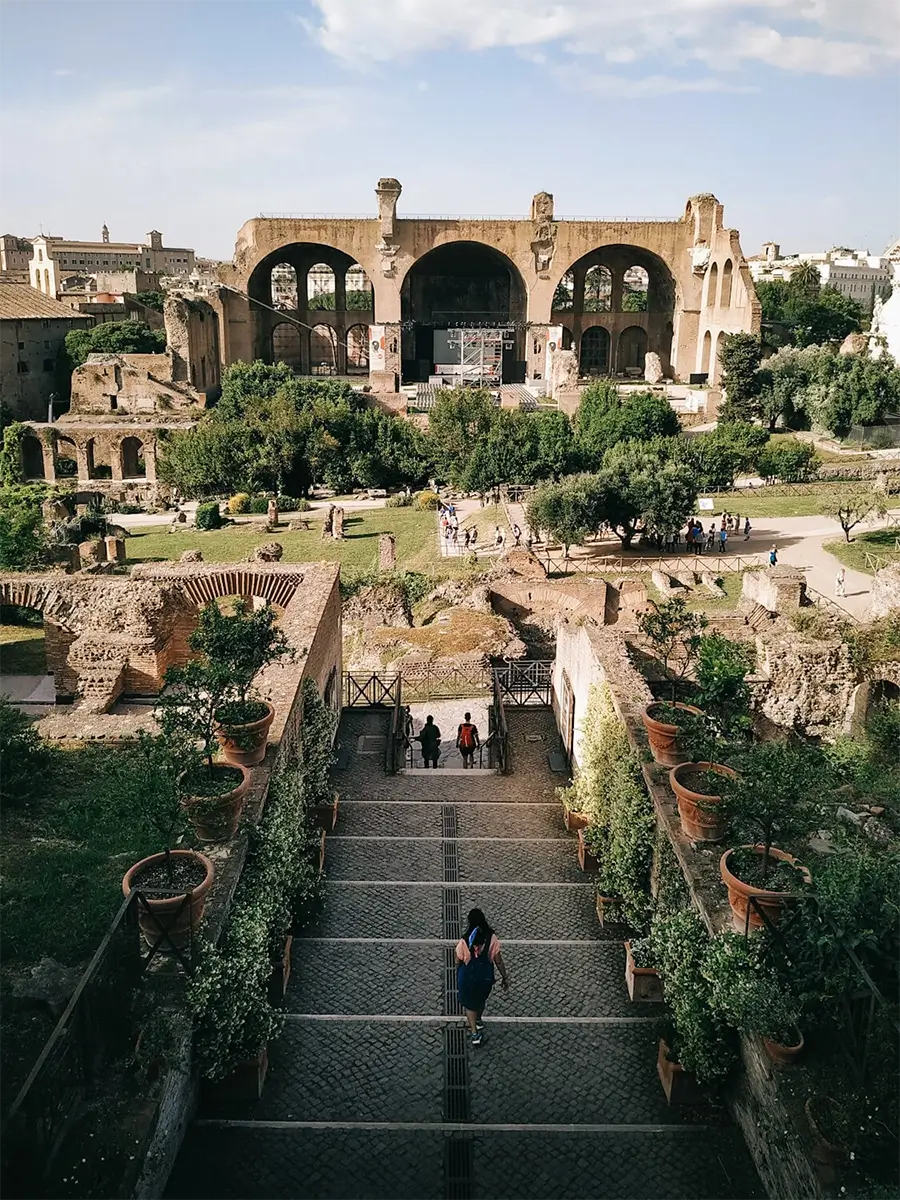
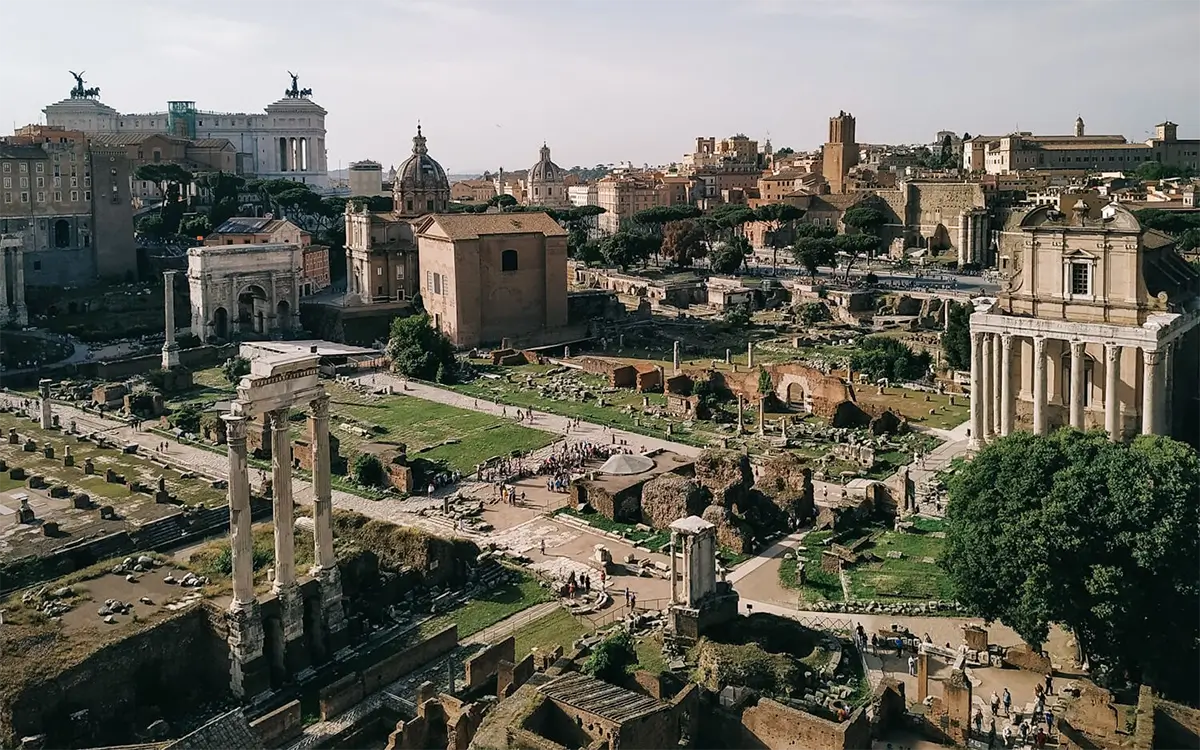
Vatican, St. Peter’s Basilica
Vatican, St. Peter’s Basilica: The smallest country in the world, with an area of 44 hectares, boasts St. Peter’s Square and Basilica, the Sistine Chapel, and the Vatican Museums.
Basilica di San Pietro in Vaticano, one of the four great basilicas of Rome. This Renaissance basilica was built between 1506 and 1626. The Basilica is the most prominent building in the Vatican, and its dome dominates the skyline of Rome. The dimensions of the Basilica are staggering. It covers 15160 m2 (2.3 acres) and has a capacity of over 60,000 people. It is 211 meters long, 186 meters wide and 132 meters high.
The dome of St. Peter’s Basilica was designed by Michelangelo and reached by an elevator and then 320 steps down to the top where you can enjoy a magnificent view of Rome. Unfortunately, we missed it because we were not in the mood to wait in the long queue. So we will see it next time. Hopefully the queue will be shorter.
If you are looking for activities in and around Rome check out GetYourGuide. They offer a ton of activities all over the world with free cancellation 24 hours in advance. It is a marketplace where you can choose between many programmes and read reviews about them.
The Vatican Museums show the rich collection of the Roman Catholic Church. The main entrance is on Viale del Vaticano. The museums were founded in the 16th century. They contain mostly Greek and Roman art. The museums and the more than 50,000 works of art on display are an unparalleled experience. We were a bit spoiled because we arrived after lunch and it was very crowded which made it a bit unpleasant for us. So it was a negative experience for us.
Vatican Museums and Sistine Chapel (all with one ticket): €20 in 2025. You can buy tickets online from the official website of the Vatican Museum. No lines if you have an online ticket.
St. Peter’s Basilica: Free. Entrance to the dome: stairs only (551 steps) €8, elevator+stairs (320 steps) €10.
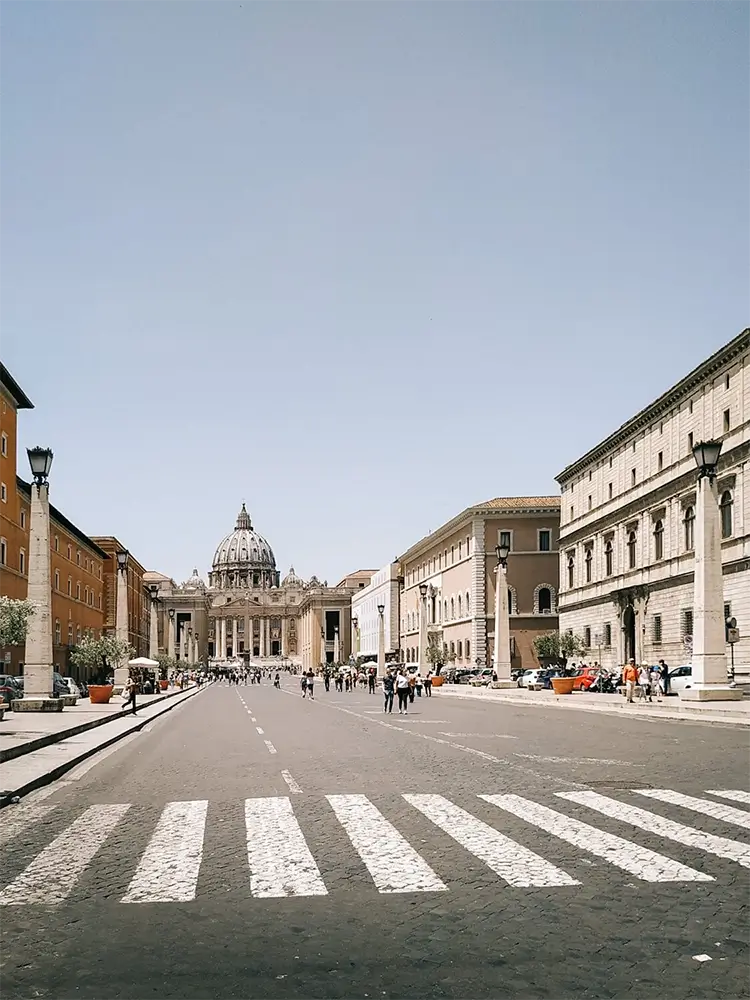
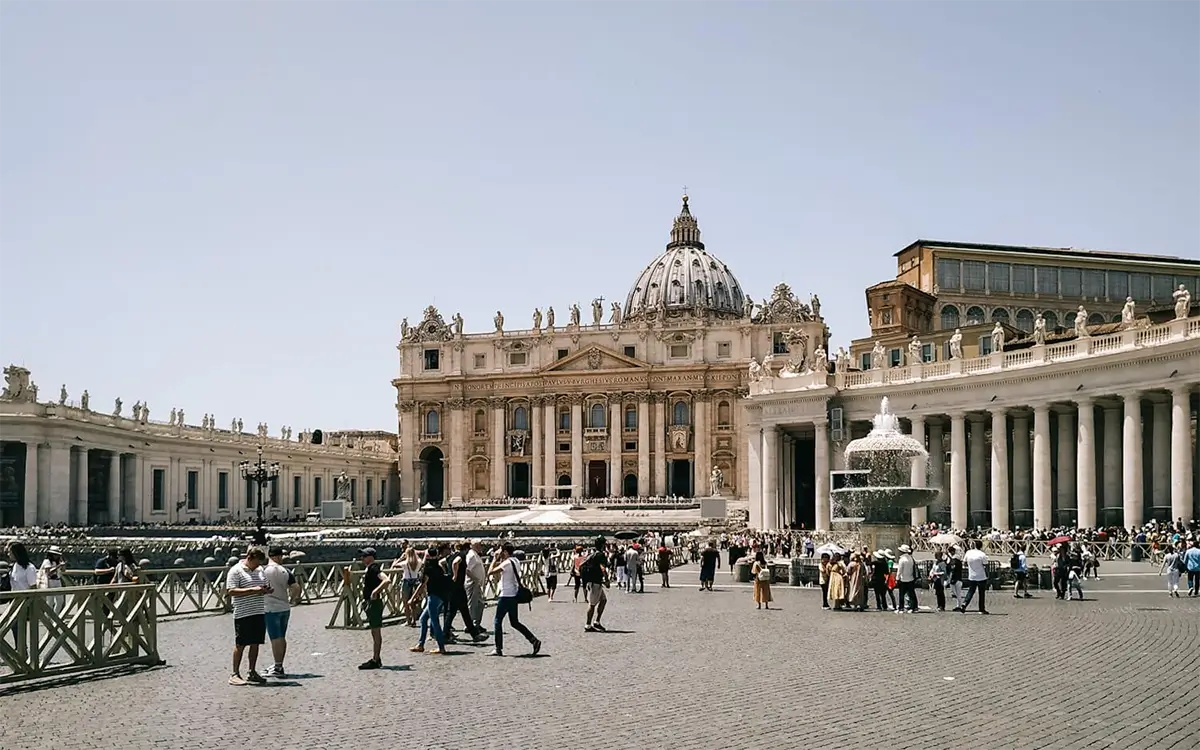
Trevi Fountain
One of the most famous and most beautiful fountains, many people throw coins into it, because according to the belief, whoever throws money into the fountain with his back over his shoulder, will return to Rome. We did so, but not yet returned :). Watch out for the rose and bracelet sellers, they are very tricky, you can easily make a buy… It is best if you visit the fountain very early in the morning, otherwise, it is very crowded.
New rules for access to the Trevi Fountain as of 2025
Under the new rules, access is now only possible via the central staircase, with a maximum of 400 visitors at a time. The exit is via Via dei Crociferi.
The access system is open from 9:00 to 21:00 on Tuesday, Wednesday, Thursday, Saturday and Sunday, and from 12:00 on Monday and Friday. Every second Monday the opening is later, at 14:00, to allow for the emptying and cleaning of the pool. However, there are no restrictions after 9 p.m. Visitors are free to move around the fountain lobby, but are not allowed to sit on the edge of the pool, and eating, drinking and smoking are prohibited in the area.
So hopefully it won’t be as crowded as it was in 2019, as pictured below.
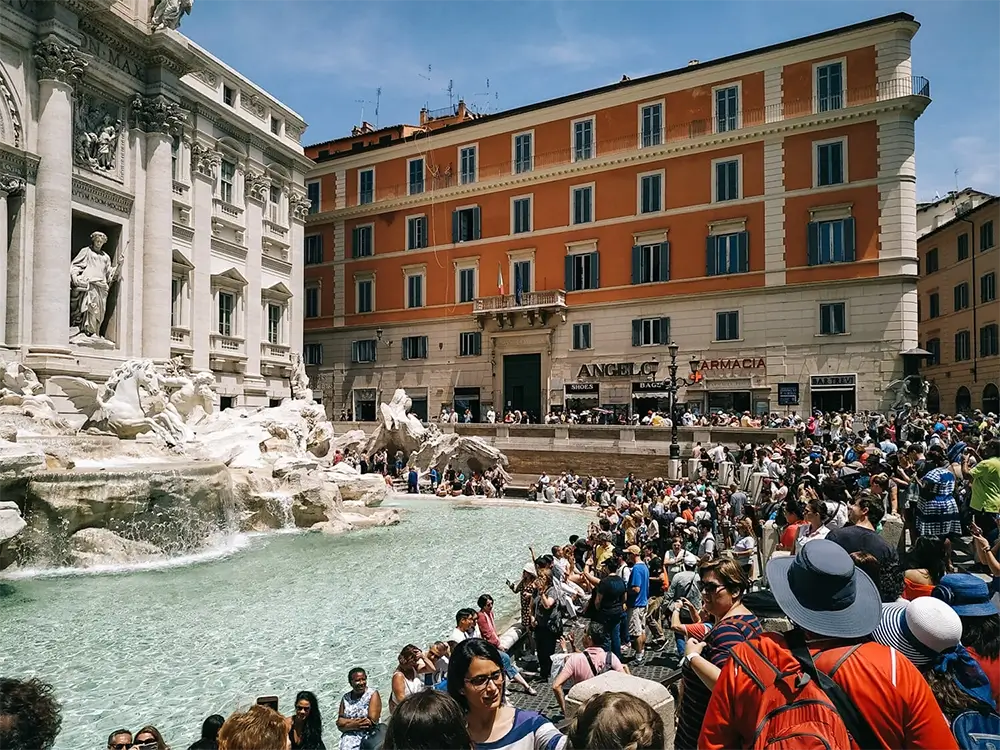
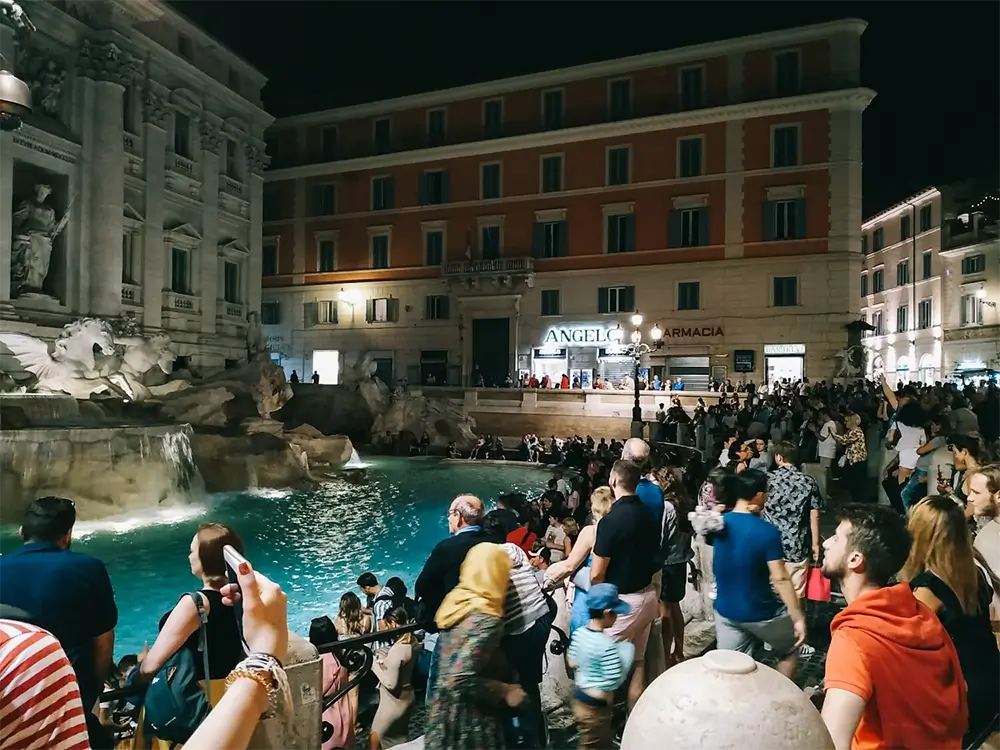
Spanish steps
Built between 1723 and 1725, it is one of the favorite meeting places of the Romans and consists of 138 steps. It is called the Spanish Steps because the Spanish Embassy is still located here.
The stairs lead to the Trinitá dei Monti church, in front of which is the Obelisco Sallustiano, one of the Egyptian obelisks of Rome, and at the bottom of the stairs is an atmospheric square, the Piazza di Spagna.
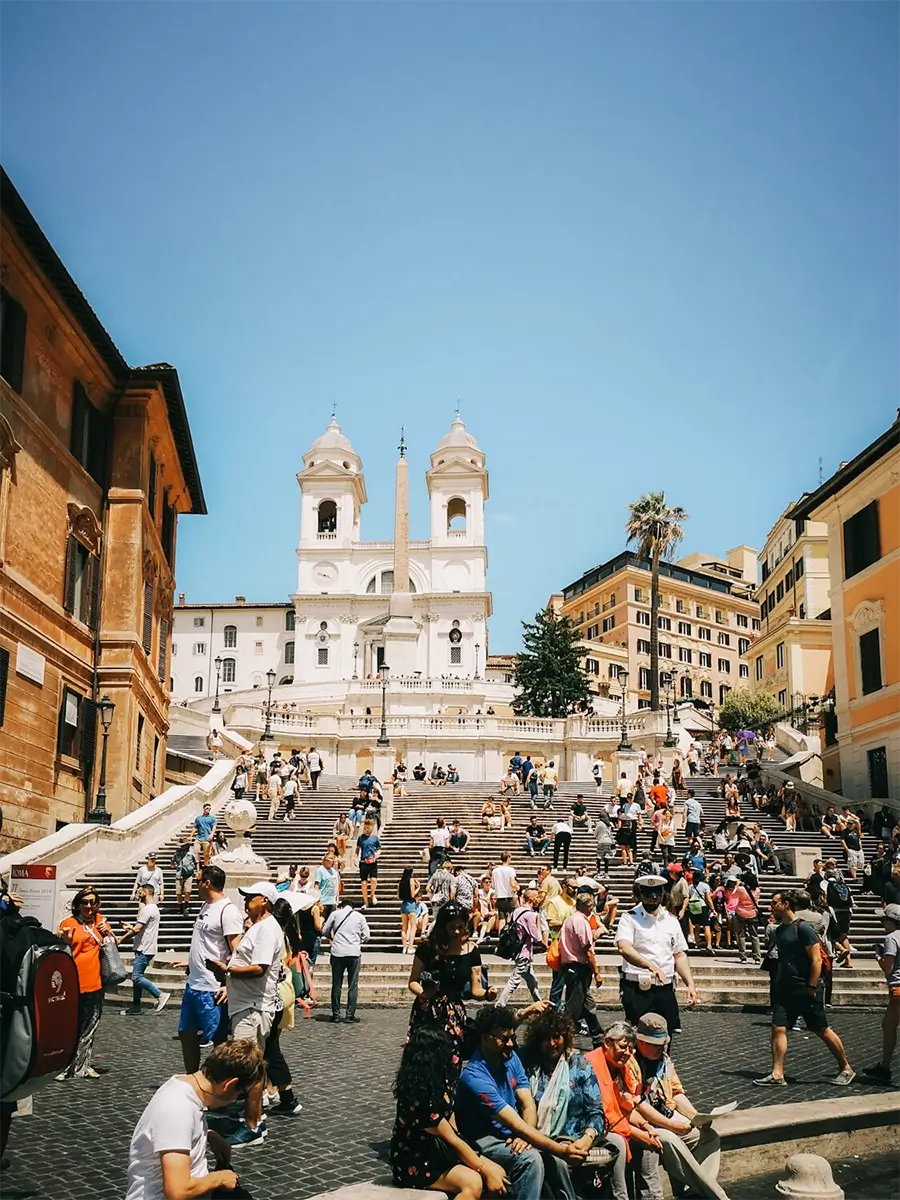
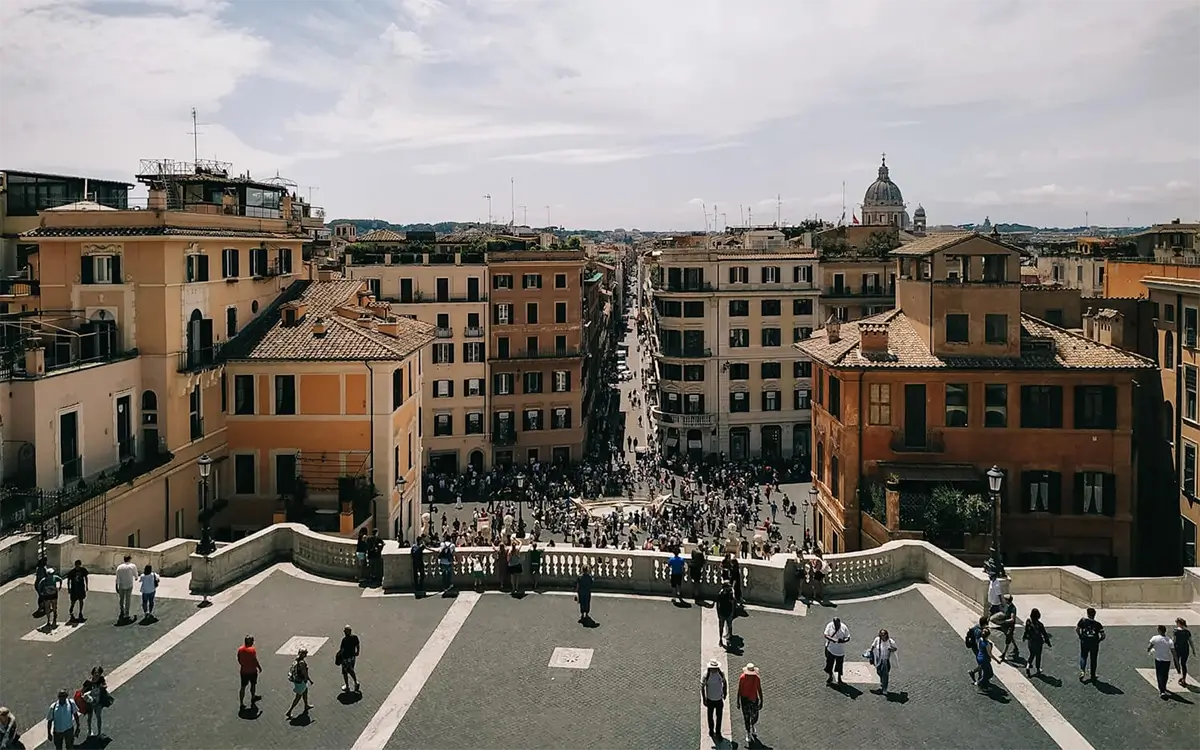
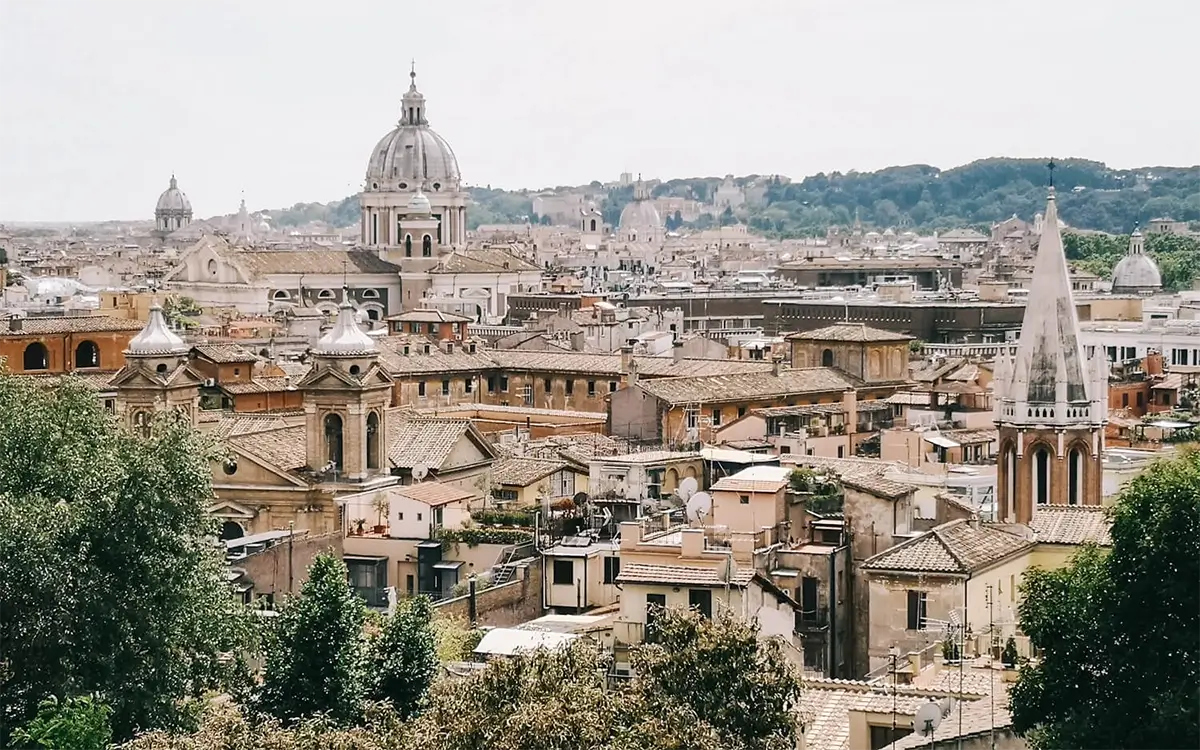
Pantheon
One of the best-preserved ancient Roman monuments, and probably one of the best-preserved buildings of its time, is the Roman Pantheon. Built in honor of the seven gods of the Roman state religion. The Pantheon has been a Christian church since the beginning of the 7th century (which is why it is in such beautiful condition).
Updated in 2025. From 3 July, the Pantheon in Rome will be paid for. The entrance is €15. You can buy tickets online on the official website of Pantheon.
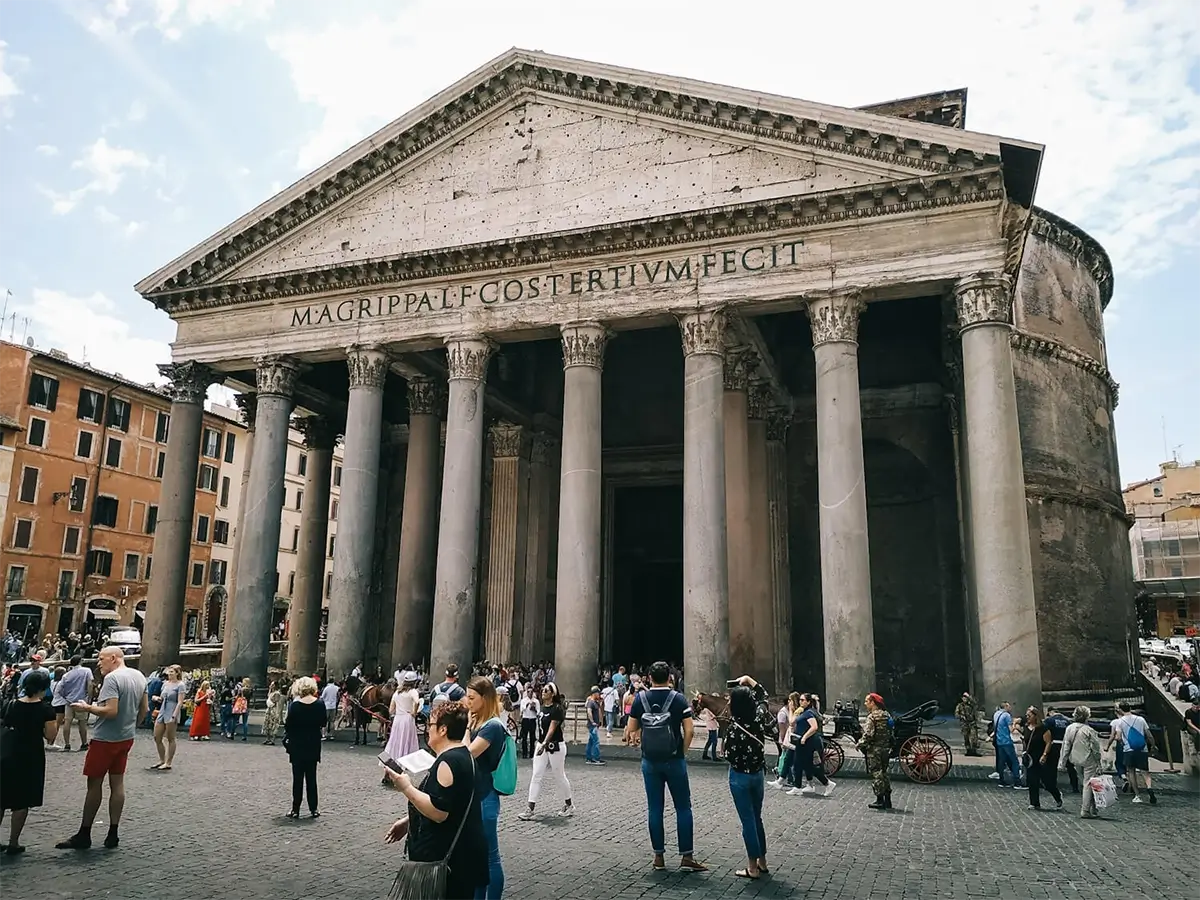
Piazza Navona
One of the most beautiful and popular squares in Rome was once the site of the city’s most popular market and boat races – then flooded with water. It was also the site of chariot races and athletic events. The oval, arena-like shape of Piazza Navona is due to the games that were once held there.
There are three fountains in the square, including Gianlorenzo Bernini’s masterpiece, the famous Fontana dei Quattro Fiumi (Fountain of the Four Rivers). Bernini’s sculptures symbolize the rivers of the four continents: the Ganges, the Danube, the Rio de Plata and the Nile. Churches and other monuments can also be admired in the square. It is a bustling place day and night, with musicians and stunt artists entertaining the crowds after dark, and restaurants and cafes full of people.
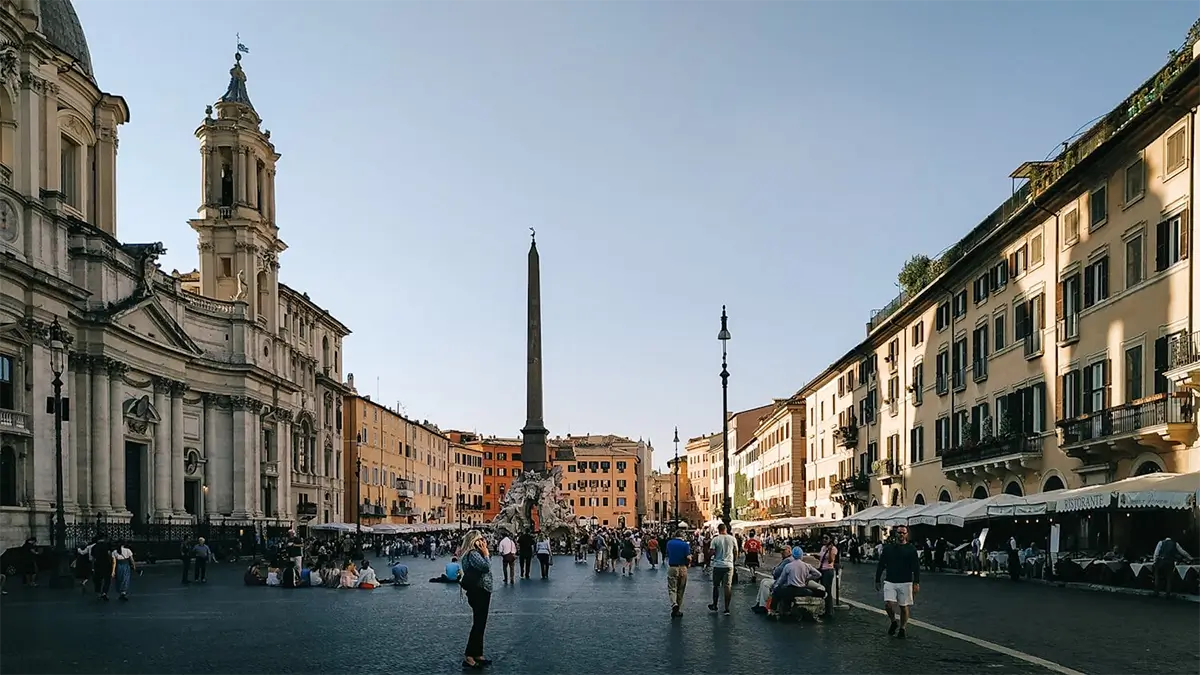
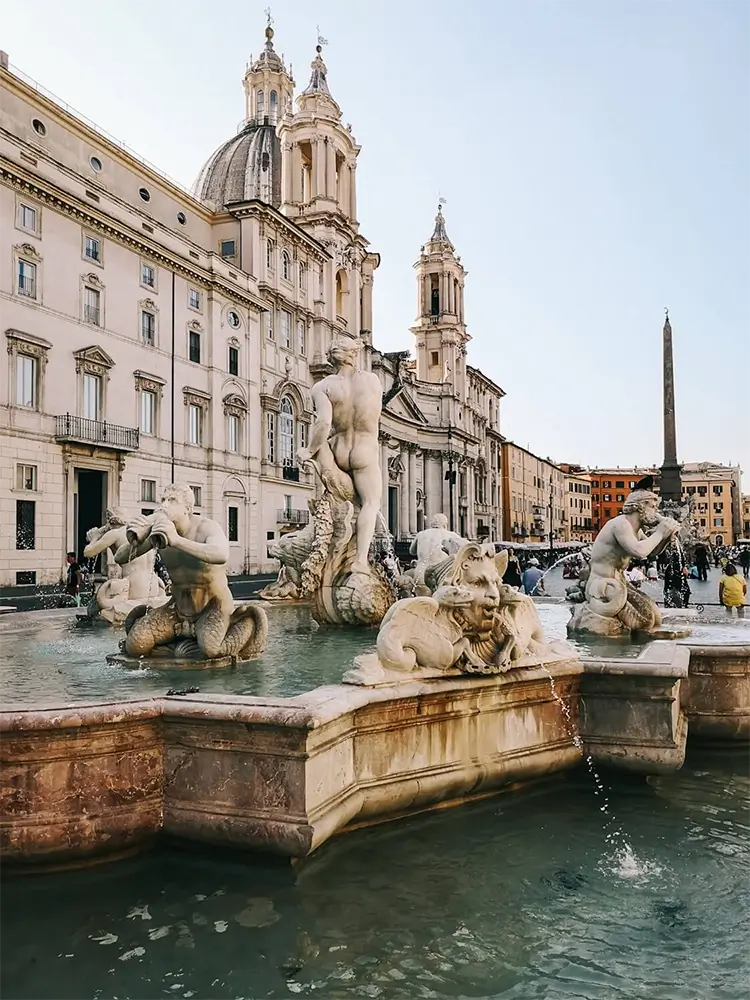
Castel Sant’Angelo
Hadrian’s Mausoleum, better known as the Castel Sant’Angelo, was built by Hadrian, a Roman governor, as a mausoleum for himself and his family. Completed in 139 A.D., the mausoleum was second in size only to the pyramids. It served as a fortress and castle for nearly a thousand years and is now a museum. Hadrian’s tomb is located here, and since 1280 a covered passageway has connected the Castel Sant’Angelo to the Vatican, thus serving as a refuge for the popes, and from then on it functioned as a castle, a chapel was also built in the 16th century.
The bridge that leads to the Castle of the Angels, Ponte Sant’Angelo, is considered by many to be the most beautiful bridge in Rome. Don’t miss the promenade on the east side of Castel Sant’Angelo, where you can rest in the shade of the trees and quench your thirst with a cool drink at the bar.
You can find more information on the official website. Entrance fee is €20.
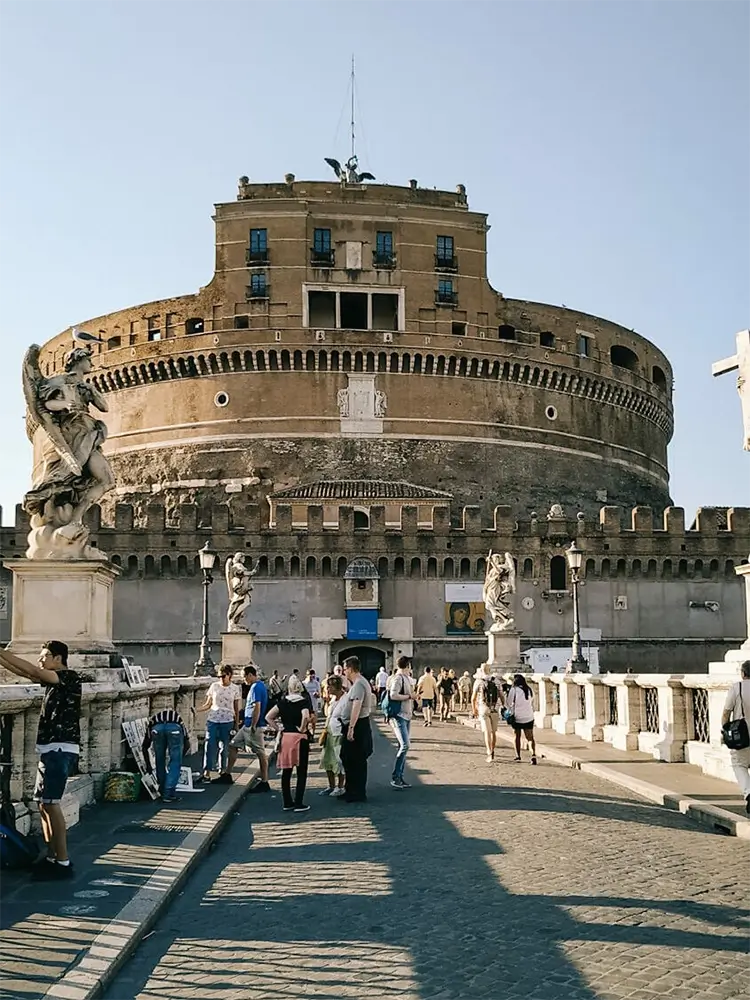
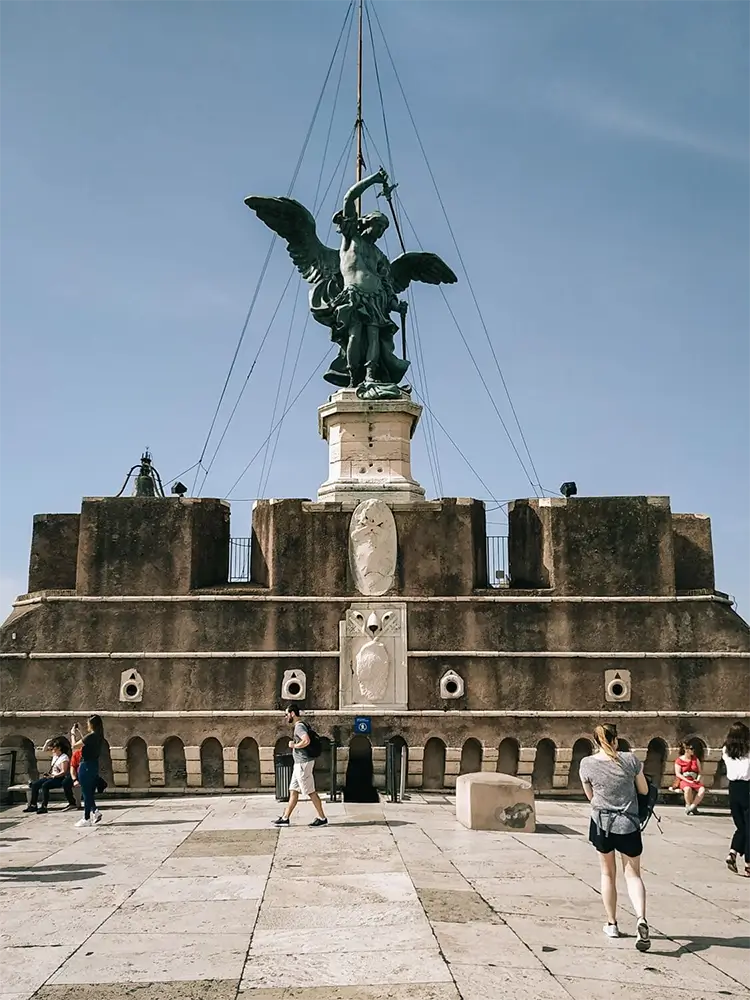
Villa Borghese
With an area of 80 hectares, the Villa Borghese is the third largest park in Rome. There is also an artificial lake in the English Park, where you can relax by boat and enjoy the idyll while visiting two Roman attractions. The park, which has wonderful natural beauty, has beautiful walkways and sculptures. It was the property of the Borghese family until 1902 when it was turned into a public park. You can rent bicycles in several places in the park so that you can move comfortably around the park.
The Galleria Borghese is located in the Villa Borghese.
Admission ticket (2025): Admission to the park is free. Galeria Borghese: €15. For 18-25 year olds: €4. You can buy tickets online from the official website.
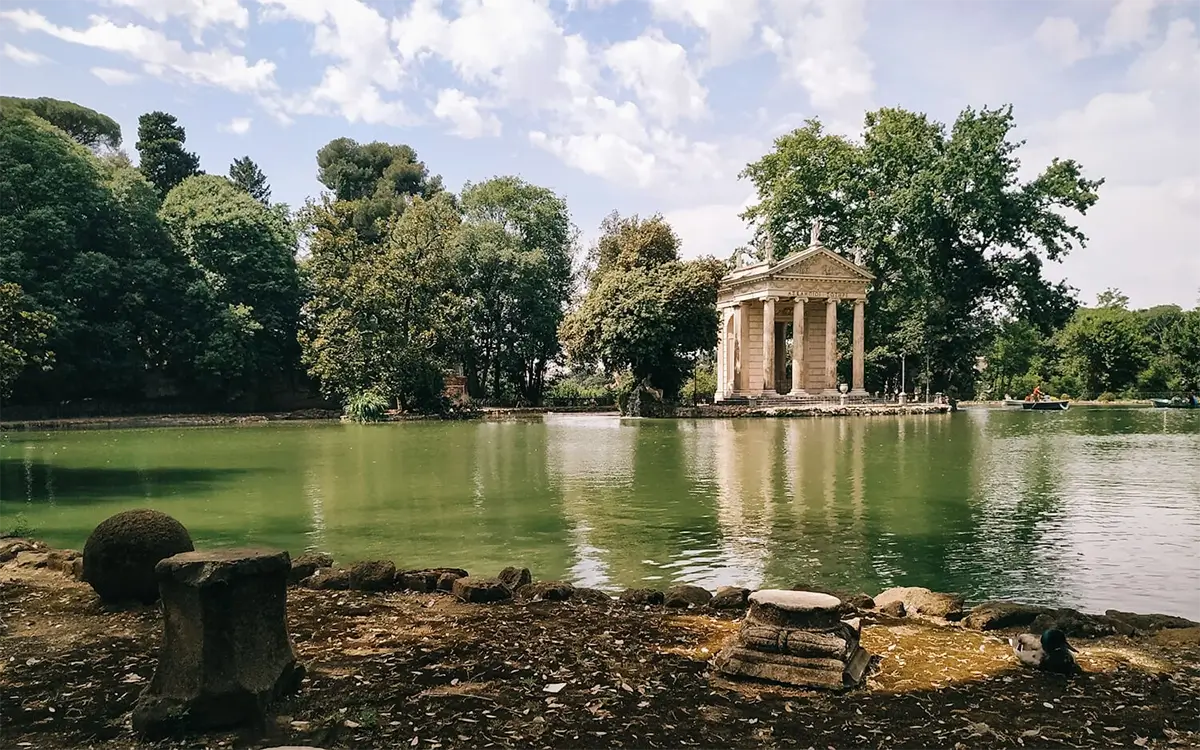
Trastevere, The 13th district of Rome
We crossed the Ponte Sisto pedestrian bridge to one of the most popular corners of Rome, frequented by tourists and locals alike, where there are many restaurants, pubs, and entertainment venues. Try the guided food tour or the discover Roman Street Food with a Local Guide walking tour through the areas Trastevere or the Jewish Quarter.
The 13th district of Rome has preserved its true Mediterranean, unmistakably Roman, Italian character: in the narrow streets clothes are dried on a clothesline, and people sit outside and talk to their neighbors. The unique atmosphere of the neighborhood has enchanted many artists and celebrities, including Ennio Morricone, who went to school here. It is worth visiting for the Italian small-town atmosphere and the medieval houses.
Affordable restaurant tips in Rome
We tried many restaurants, bars, ice cream parlors. There was one place we forgot to mention because it was very touristy and the food didn’t last very long, it was right on the Campo de’ Fiori square. However, there were many things that we still look back on with fondness. One of them was Pastasciutta. We dropped it on the street during our visit to the Vatican, it’s very close to it, let’s call it a fast food pasta maker. The place itself is quite small, there are few seats inside, we didn’t get in either, but like others, we ate our pasta lunch on the street. The pizza at 433 was also delicious.
If you want excellent ham, cheese or sandwiches, you should visit Pane e Salame. The service is very nice and friendly. A popular, hidden, modern bistro known for its meat and cheese platters paired with Italian wines. If you like street food, there are great tours with local guides. When it comes to pasta, a pasta-making cooking class can be an unforgettable experience as you will be able to make delicious pasta at home.
When it comes to ice cream, you should try Venchi Cioccolato e Gelato. But there is always a long queue.
Frequently Asked Questions
How many days should I spend in Rome?
Three full days provide a good overview of Rome’s major attractions, including ancient sites, Vatican City, and charming neighborhoods.
Is the Roma Pass worth purchasing?
The Roma Pass can be beneficial if you plan to visit multiple museums and use public transport frequently. However, it doesn’t cover the Vatican Museums or airport transfers.
What’s the best way to get from Fiumicino Airport to central Rome?
The Leonardo Express train offers a direct 30-minute journey to Termini Station for €14. It’s a convenient and reliable option.
Where should I stay in Rome for easy access to attractions?
Staying near Campo de’ Fiori places you within walking distance of many key sites and offers a lively atmosphere with markets and eateries.
What are must-see attractions in Rome?
Key highlights include the Colosseum, Roman Forum, Vatican Museums, St. Peter’s Basilica, Trevi Fountain, Pantheon, and the Spanish Steps.
Is it necessary to book tickets in advance for major sites?
Yes, especially for popular attractions like the Colosseum and Vatican Museums, booking ahead can help you avoid long queues.
Are you planning your next trip?
Here are my favourite ways to save time and money!
Hotel
Wide range of accommodation with free cancellation
Rental Car
I used DiscoverCars for my rental and was impressed with their transparent pricing and 24/7 support.
Hotel
Offers personalized travel suggestions that match your preferences and budget
Insurance
Be covered for unexpected medical issues and travel mishaps
Activities
Discover the best affordable activities around the world
Have you visited Rome or are you planning a trip to explore Rome? I’d love to hear your experiences or answer any questions!
For more travel inspiration and practical guides, subscribe to my newsletter and never miss an adventure.

